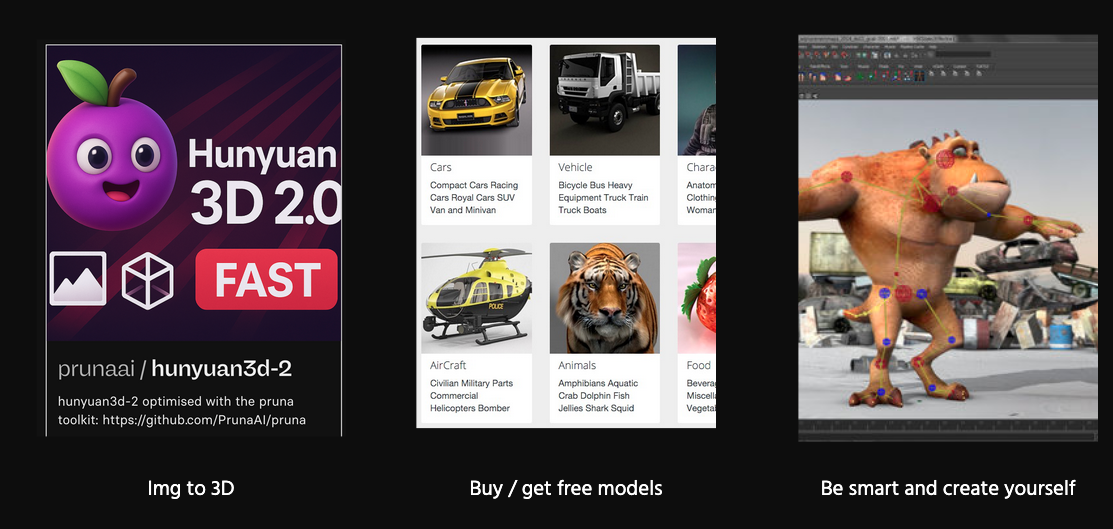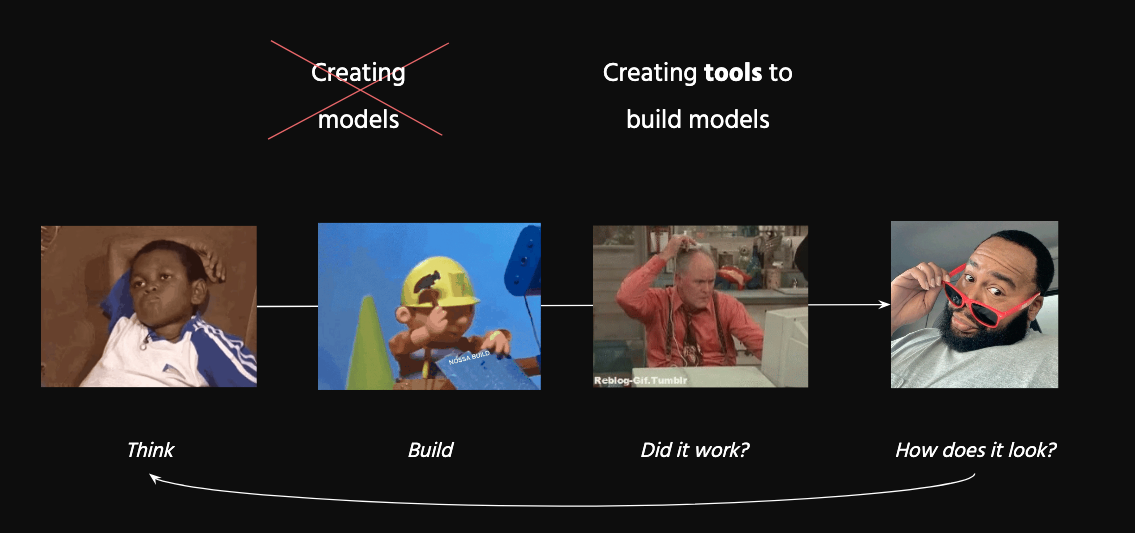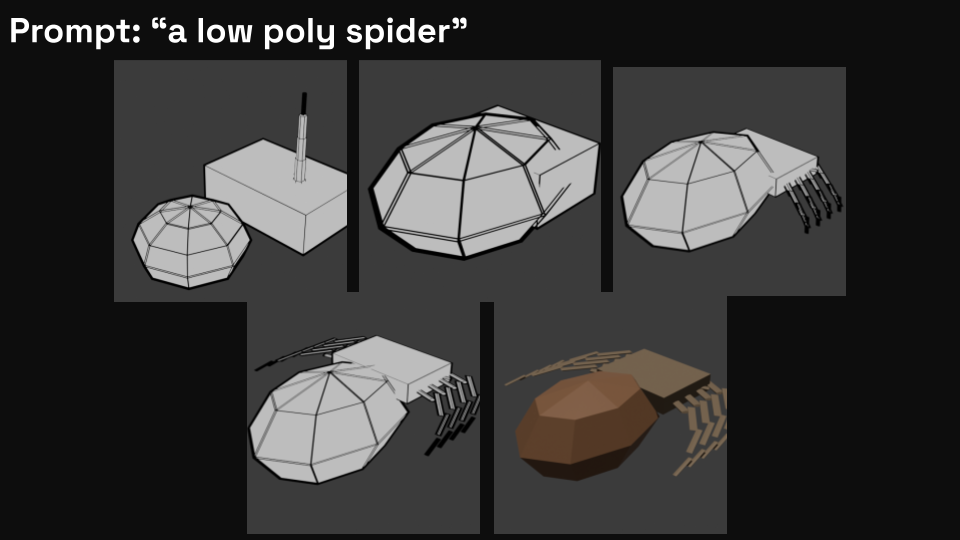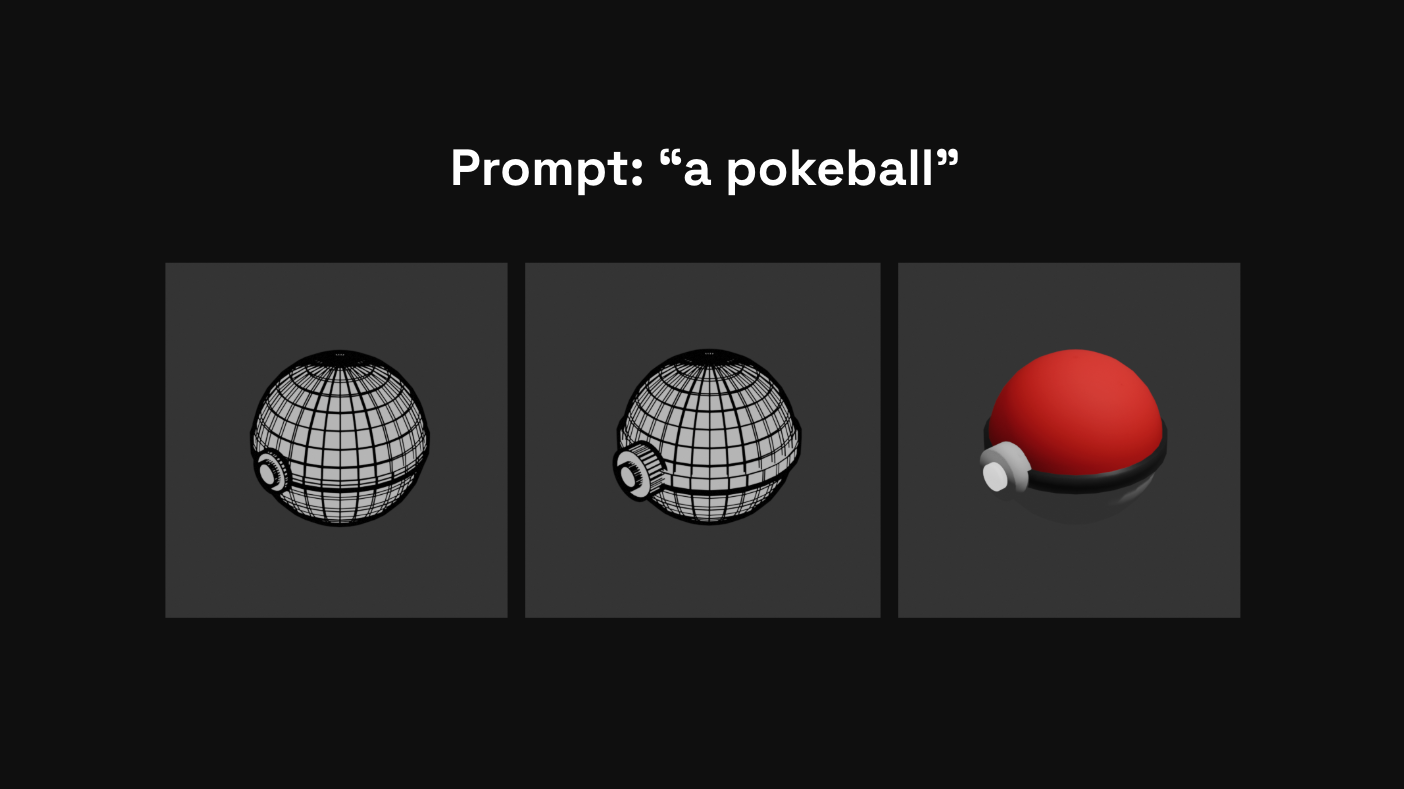This post explores the exciting world of 3D model generation using Large Language Models (LLMs).
Typical 3D Model Generation
Traditionally, 3D models are generated through various methods:
- Image to 3D conversion
- Buying or getting free models
- Creating models yourself

Challenges with Typical 3D Model Generation
However, these methods often come with their own set of challenges:
- Shitty quality (often low-quality results)
- Expensive or inconsistent quality
- Time-consuming processes
Using LLMs Instead
LLMs offer a new approach to 3D model generation:
- Think: LLMs can conceptualize and understand complex descriptions.
- Creating tools to build models: LLMs can be used to develop tools that automate model creation.
- Creating models: LLMs can directly generate 3D models from text prompts.
- Build: The process involves building the model based on the LLM's output.
- Did it work? Evaluation of the generated model.
- How does it look? Visual assessment of the model's appearance.

Examples of LLM-Generated 3D Models
Here are some examples of 3D models generated using LLMs:

.png)
.png)
.png)
.png)
.png)


Finding the limits
While LLMs can generate impressive 3D models, there are still limitations to consider:
- Design: After a ton of iterations, the final design may still lack the intended vision.
- Detail: Fine details may be lost or never created in the generation process. Low poly models do best here.
- Consistency: Getting consistent results across multiple generations can be challenging.
.png)
.png)
What's Next
The future of LLM-powered 3D modeling holds exciting possibilities:
- 🏃🏼♀️ Increase Speed
- ⚙️ Ensure consistency
- 🌀 Support higher fidelity 3D models